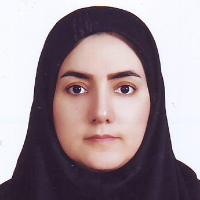Investigating the changes in the spatial structure of Tehran and the impact of the pedestrian-oriented development plan on it
The spatial structure of Tehran has evolved and changed over time under various spatial, temporal, and other factors. To gain a proper understanding of how changes in the spatial structure and new development plans, such as pedestrian-oriented development plans, have affected the historical area of the city, it is necessary to have knowledge of the past and the evolution of its spatial structure. This will enable us to examine the factors that have influenced spatial developments. This study aims to investigate the transformations of the spatial structure throughout different historical periods using the Space Syntax method, based on the analysis of the changes in the degree of integrity. Determining the degree of integrity at the neighborhood and supra-neighborhood scales of the streets located in the historical area plays a significant role in their valuation and prioritization for accepting pedestrian-oriented development plans. This study considers the implementation of such plans to be effective in integrating and connecting the historical structure of the city, while also recognizing the importance of the formation of these specific streets before their transformation into pedestrian axes in enhancing their pedestrian accessibility. Accordingly, the authors have classified the streets located in the historical area of the city. This research falls under the category of applied studies in terms of nature and purpose, and employs an interpretive-historical strategy to reconstruct the spatial transformations of Tehran's urban structure, followed by simulation and content analysis to evaluate the data. The findings suggest that pedestrianization of 17 Shahrivar Street, as a case study, not only fails to help preserve the value of integrity and coherence of the city's historical center, but also weakens the accessibility and connectivity indices at the neighborhood and supra-neighborhood scales.
-
From Rational Conservation to Pragmatic Conservation; The Practical Craft of TCHOGHAZANBIL WHS Conservation
Sadra Moradi, *
HOnar - ha - ye - ziba Memari - va - shahrsazi, -
Designation of Use in Industrial Heritage Adaptive Reuse by Using the Analytical Hierarchy Process Method
Seyyed Hossein Akbari Faragard, Somayeh Fadaeinezhad *
Journal of Iranian Architecture Studies, -
“Integrity" in the conservation and development of urban heritage
*, Pirouz Hanachi, Bahramjerdi
International Journal of Architectural Engineering & Urban Planning, Jul 2024




